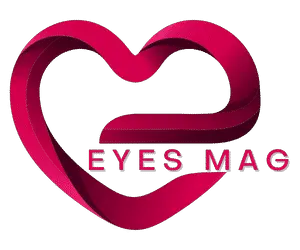The Difference Between Rainbow Colors And LGBT Flag
The LGBT flag is a symbol developed by the lesbian, gay, bisexual, and transgender community to express their pride and identity, in contrast to rainbow colors, which are a natural phenomena that may be seen in the sky after a downpour. While the colors on the LGBT flag each have a special significance, such as red for life, orange for healing, yellow for sunlight, green for nature, blue for peace, and purple for spirit, the colors on the rainbow have no particular symbolism or meaning. In contrast to the LGBT flag, the rainbow colors are also placed in a distinct pattern and sequence.
Lesbian Pride Flag
Created in 1989 by Tony DeBlase, the rainbow colors on the lesbian pride flag represent the lesbian subculture known as Lipstick Lesbians. This subculture is characterized by a more feminine image than other forms of lesbian subculture. The Lesbian Pride Flag also incorporates seven different shades of pink and orange.
The most familiar and widely used variation of the rainbow colors on the lesbian pride flag is the six-stripe version. The original design included eight colored stripes, with the colors representing gender, sex, life, magic, nature, serenity, healing, and spirit.
The original design of the lesbian pride flag also featured a red lipstick kiss mark in the top left corner. Several people use this symbol to represent feminine lesbians. However, this symbol does not always represent everyone’s view of the community. Some lesbians are uncomfortable with being depicted by the lipstick lesbian flag.
Another popular variant of the rainbow colors on the lesbian pride flag includes the green stripe, which represents non-binary genders. This symbol also features the Greek letter lambda in white in the middle of the Flag.
The rainbow colors on the lesbian pride flag have also been used to represent other identities, such as bisexuals. The Bisexual Pride Flag was designed to increase the visibility of bisexual individuals. The Flag has three sections: one section is purple, which symbolizes women; the second section is yellow, which symbolizes men; and the third section is gray, which symbolizes people who have multiple genders.
Another variation of the rainbow colors on the lesbian pride Flag is the bi-pride Flag, invented by Florida-based LGBTQ activist Michael Page in 1998. The Flag uses overlapping triangles as a symbol for the bisexual community.
The aromantic pride flag is another colorful variation of the rainbow colors on the lesbian pride banner. The Flag has five stripes: three on the top and two on the bottom. The black stripe on the hoist signifies asexuality, while the black triangle in the upper left corner represents members of the aromantic community who have died from AIDS.
The newest versions of the rainbow colors on the lesbian pride flag include a version with intersex. This version of the rainbow colors on the lesbian pride flag represents a group of asexual people who do not identify with any gender.
Transgender Pride Flag
Whether you’re looking to create a rainbow flag or just curious about the meanings of the colors, these colors represent important LGBTQIA+ values. They’re a great way to help people understand what you are about. The rainbow flag has been an international symbol of the community since the 1970s. Today, it has evolved to include different identities.
Gilbert Baker designed the original pride flag. The Flag featured eight different colors. The colors represented genders and sex, but also represented the sun, nature, and the spirit. Later, the rainbow flag added orange stripes.
The progress pride flag combines the original rainbow colors with those of the transgender pride flag. The white stripe in the middle symbolizes individuals transitioning, and the black and brown stripes symbolize HIV/AIDS patients and transgender people. This Flag reminds those who are transgender or live with HIV that they are not alone. In addition, it draws attention to the plight of LGBTQ+ people of color and those suffering from HIV/AIDS.
The transgender pride flag was first flown at the Phoenix Pride Parade in 2000. Now, it is the prevailing Flag of the transgender community.
The Progress Pride Flag was created to represent transgender people and to make a statement about the marginalization of the LGBTQ+ community. It is a variation of the six-stripe rainbow flag. The color scheme is similar to the original pride flag, except that it includes a purple circle within a yellow triangle.
The trans pride flag was also used in the White House during Pride Month in 2012. Monica Helms, a trans activist and Navy veteran designed the Flag. She says that she chose the colors because they looked the same in any direction. In addition, she noted that this was symbolic of transgender individuals searching for correctness in their lives.
The rainbow pride flag also features the colors of the polyamory flag. This Flag represents infinite love for multiple partners. It’s also meant to be a symbol of solidarity with polyamorous people. It is also borrowed from the bisexual Flag.
Demi girl Pride Flag
Designed by Tumblr user Transrants in July 2015, the Demi girl Flag is a rainbow color flag pronounced Demmy-girl. It is made of SuperTex, a quality polyester fiber and PVC blend, and measures 90 x 150 cm. It is finished with brass grommets. The Flag’s reversible design allows it to be used on either side. It can be hung as a banner or used as a cape.
The purple and white line on the Flag represents fluid gender experiences. It also symbolizes a combination of feminine and masculine qualities. It is the most extensive and most complicated of the three lines. The purple line symbolizes femininity, while the white line represents non-binary genders.
The other three lines on the Flag represent agender, asexuality, and semi-genderlessness. They are the most visible and the most impressive.
The purple circle in the center of the Flag is a symbol of wholeness. It represents femininity and community. The other two lines are also worth mentioning. The light orange line signifies a community, while the black line symbolizes asexuality.
The demi girl Flag has no official color meaning, but it has many of the same colors found on other rainbow-colored pride flags. As a result, it is considered a must-have for anyone in the LGBT community, especially those who don’t identify with a binary gender. In addition, it is an excellent way to show your support for gender diversity.
The Demi girl Pride Flag is a great way to let people know you support the LGBTQ community. It’s a beautiful piece of art that you can display in your home or office. It is available in three colors: pink, gray, and yellow. It is a high-quality product made from quality materials sourced from independent artists. It is printed in socially responsible ways, so every purchase puts money into the artist’s pocket.
Although the color naming game isn’t perfect, the Demi girl Flag is one of the best symbols for the LGBTQ community. In addition, it has been a source of inspiration for many other designers, including Monica Helms, who created the trans-Flag.
Straight Ally Flag
Whether you are a member of the LGBTQ community or not, you will probably have heard of the rainbow colors and LGBT Flag. These iconic symbols of the queer community have a long history and represent a safe space for LGBTQ+ people. However, not all flags are created equal. Several different types of flags are created for varying identities. These can help you find other members of your community who share your identity.
Gilbert Baker designed the original Gay Men’s Pride Flag. He met Harvey Milk in 1974 and was challenged to create a symbol of pride for the LGBTQ community. The design initially consisted of eight stripes, with each color representing a different aspect of the community. Traditionally, the colors represented nature, healing, sex, and magic.
Later, the six-stripe design was developed. This design is most commonly displayed during Pride month. Although the original version excluded intersex individuals, the updated Flag includes gender-nonconforming men and transgender people.
There are some flags, many of which are based on rainbow colors and the LGBT logo. Each one represents different aspects of the LGBTQ+ community, and they all offer a simple way for community members to identify with others. Having a variety of flags is essential because it helps the marginalized feel more visible.
Another flag that has gained much attention in recent years is the Lipstick Lesbian Flag. This Flag is a girly design and features a red lipstick kiss mark in the top left corner. It became popular around 2018. However, some lesbians oppose this Flag because of McCray’s comments.
Several other flags have been created recently, including the Pansexual Flag, the Asexual Flag, and the Drag flag. These flags were all designed to help increase visibility for members of the LGBTQ+ community. These designs are also essential to show solidarity with the BLM movement.
There are other flags for different identities, such as the heterosexual pride flag, the aromantic Flag, the straight ally flag, and the demisexuality flag. These flags all have different configurations, but they all represent a part of the LGBTQ+ community.
FAQ’s
What’s the difference between a rainbow flag and a pride flag?
This is the version of the Pride Flag that is used to represent the whole LGBTQIA+ community and that we are all familiar with. To make it simpler to mass-produce, the pink and turquoise were taken out of the flag in this form.
Is the rainbow flag for LGBTQ?
There are particular flags honoring the identities of the pansexual, asexual, bisexual, lesbian, transgender, and other groups. The LGBTQIA2-S community as a whole has long used and accepted the rainbow-striped flag as their primary Pride emblem.
Why rainbow Colour is used for LGBT?
Given that LGBT individuals exist in a variety of racial, age, and gender identities and since rainbows are both naturally occurring and stunning, the flag’s various hues were intended to symbolize unity. Eight distinct colors, each with a distinct meaning, were used in the original flag.
What is the full form of LGBT?
Lesbian, Gay, Bisexual, and Transgender is referred to as LGBT. a general phrase used to describe the neighborhood as a whole. Individuals who have romantic, sexual, or affectionate feelings for both sexes and both genders are said to be pansexual or omnisexual.
How many colors are in the LGBT flag?
Since then, the flag has been changed to only utilize six colors: royal blue has replaced turquoise and indigo, and pink is no longer used. The Progress Pride banner was developed in 2018 by nonbinary artist Daniel Quasar and is modeled off the well-known rainbow flag from 1978.


















